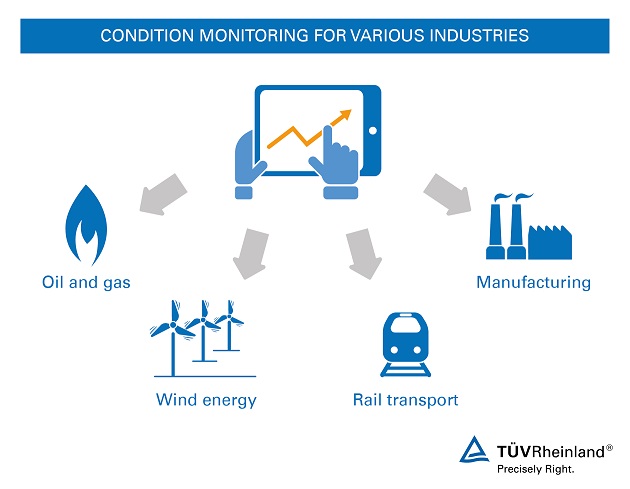Condition Monitoring is one of today’s core challenges in the use of mechanical facilities and technical systems in which, for example, motors, generators, and gears are used. Planned maintenance is becoming more and more important for minimizing risk of production downtime not only in the industrial sector but wherever machines are used. Among other things, the vibration patterns of the machines are analyzed for this. The vibrations caused by the gearbox are usually perceived in the frequency domain as a multiple of the shaft speed. Irregularities in the different frequencies point to wear, imbalance, or loose parts. MEMS (microelectromechanical system)-based accelerometers are often used for measuring frequency. Compared with piezoelectric sensors, they feature a higher resolution, excellent drift and sensitivity characteristics, and a better signal-to-noise ratio (SNR). They also enable detection of low frequency vibrations close to the dc range.
In this article, a highly linear, low noise, wideband vibration measurement solution based on the ADXL1002 MEMS accelerometer is shown. This solution can be used for bearing analysis or engine monitoring and for all applications in which a large dynamic range of up to ±50 g and a frequency response from dc to 11 kHz are required.
Figure 1 shows an example circuit. The analog output signal from the ADXL1002 is fed via a 2-pole RC filter to the successive approximation register (SAR) analog-to-digital converter (ADC) AD4000, which converts the analog signal to a digital value for further signal processing.
The ADXL1002 is a high frequency, single-axis MEMS accelerometer that provides an output signal pass band extending beyond the resonant frequency range of the sensor. This is desired so that frequencies outside the 3 dB bandwidth can also be observed. To accommodate this, the output amplifier of the ADXL1002 supports a small signal bandwidth of 70 kHz. Capacitive loads of up to 100 pF can also be directly driven with the output amplifier of the ADXL1002. For loads greater than 100 pF, a series resistor ≥ 8 kΩ should be used.
The external filter at the output of the ADXL1002 is required to eliminate aliasing noise from the output amplifier and other internal noise components of the ADXL1002 that arise, for example, through coupling of the internal 200 kHz clock signal. Therefore, the filter bandwidth should be implemented accordingly. With the dimensioning shown in Figure 1 (R1 = 16 kΩ, C1 = 300 pF, R2 = 32 kΩ, and C2 = 300 pF), attenuation of about 84 dB is achieved at 200 kHz. Also, the selected ADC sampling rate should be higher than the amplifier bandwidth (for example, 32 kHz).
For the ADC, the ADXL1002 supply voltage should be selected for its reference because the output amplifier has a ratiometric relationship with the supply voltage. In this case, the voltage supply tolerance and the voltage temperature coefficient (which are usually connected to external regulators) run between the accelerometer and the ADC so that the implicit error associated with the supply and reference voltages is cancelled out.
Frequency Response
The frequency response of the accelerometer is the most important characteristic of the system and is shown in Figure 2. The gain increases at frequencies above about 2 kHz to 3 kHz. For the resonant frequency (11 kHz), a peak value for the gain of about 12 dB (factor of 4) in the output voltage is yielded.
To display measuring range overshoots (over range), the ADXL1002 has a corresponding output (OR pin). The integrated monitor emits a warning when a significant over range event occurs.
Mechanical Considerations Regarding Mounting
Special attention should be paid to correctly placing the accelerometer. It should be mounted close to a rigid mounting point on the board to avoid any vibrations on the circuit board itself and thus measurement errors due to undamped circuit board vibrations. The placement ensures that every circuit board vibration on the accelerometer lies above the mechanical sensor resonant frequency and hence is practically invisible to the accelerometer. Multiple mounting points close to the sensor and a thicker board also contribute to lowering the impact of system resonance on the sensor performance.
Conclusion
With the circuit shown in Figure 1, a MEMS-based solution for detecting vibrations from the dc range to 11 kHz, as is often required in condition monitoring of rotating machines, can be built relatively easily.








